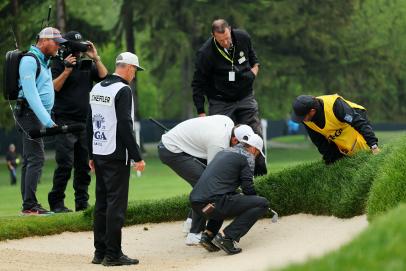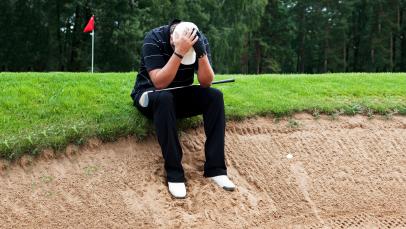Rules Review
Rules of Golf Review: My ball's in the water, and it's on the move! What are my options?

Image Source
Although many golf-course penalty areas are ponds or lakes with little to no current, there are some water features you might encounter that can take your golf ball for a nice little cruise once it splash lands. If you find that your ball is "on the move" in a penalty area, it's important to know your options for what can happen next.
One might surprise you, but you can actually play the moving ball!
According to the Rules of Golf, normally playing a moving ball is no-no (Rule 10.1d). But there are three exceptions, and one of them is when a ball is either moving in water in a penalty area or if it's moving in temporary water. In the case of the latter, think of a wash-out situation on a day with heavy rain taking your ball from the fringe of an elevated green to the bottom of a collection area. Or picture overflow from a penalty area that is about to move your ball into the penalty area. Those could be times when hitting the ball on the move might make sense to save yourself a far worse lie.
PGA Tour player Emiiano Grillo had this option last May at the Charles Schwab Challenge in one of the more bizarre rules incidents of 2023. An aqueduct alongside the 18th hole was slowly moving his ball in the wrong direction. Interestingly, Grillo could have stopped the madness by playing the moving ball out of the penalty area.
Of course, in most cases, the prudent play would be to take relief if your ball is in a penalty area (and add a stroke). That's what Grillo wound up doing and he eventually went on to win the tournament. If it's temporary water (think puddles from rain, or natural ice, etc.), you get free relief. (See Rule 16.1 for relief procedures.)
When it's in a penalty area and on the move and you want to take relief, you still have to determine where it last crossed the margin of the area. And just as a reminder, a ball is considered in a penalty area when any part of it touches the boundary (see Rule 17). If you're unsure as to where it last crossed, you must estimate using all available evidence.
The important thing to remember with a ball in a penalty area or in temporary water is that if it's not staying completely still, you are not penalized for giving it a whack.


